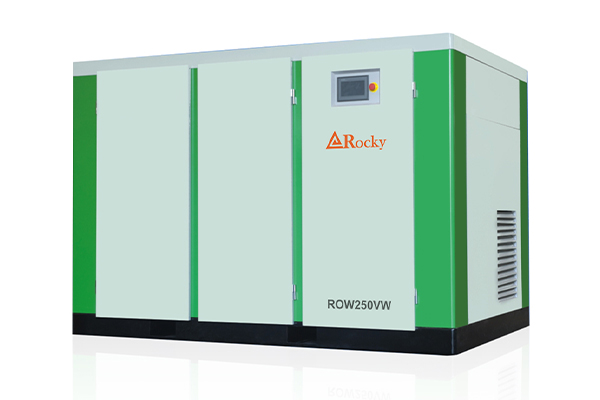
In July last year, a nitrogen compressor unit was in operation, and it was difficult to start and load from time to time. It can be judged from the sound of the loading that it is showing results in the loading process. However, due to the urgent consumption obligation of Party A in advance, the gas source cannot be infixed, and the maintenance personnel only stopped changing the loading solenoid valve without affecting the consumption of gas.
However, within two days, the maintenance department received an emergency call. This air compressor could not be loaded and pumped. The unit was only empty and did not produce compressed air. In view of this situation, let's first understand the task principle of the air compressor loading valve. Let's introduce the task principle above:
The intake valve of the air compressor is closed when it is started, and the motor drives the main engine to no-load. When loading is required, the intake valve opens. Generally, an air pipe larger than 5mm is led out from the top cover of the oil and gas separator, and the intake valve is controlled by the switch of the solenoid valve (the solenoid valve is a normally open solenoid valve). The air valve is automatically opened, the intake valve is loaded, and the air compressor starts to pump air. When the solenoid valve is de-energized, the compressed air enters the intake valve, the air pressure lifts the piston, the intake valve is closed, and the discouraged vent valve opens. The air pressure is divided into two ways, one is intake and exhaust from the valve, and the other is sucked into the compressor. There is a connector on the discouragement valve that can adjust the size of the exhaust gas, which can control the pressure in the barrel of the oil and gas separator. Normally the pressure can be adjusted to 3 kg. The pressure increases in the clockwise direction and decreases in the counterclockwise direction. After adjustment, tighten the nut.
Air volume adjustment method of loading valve:
When the user's gas consumption is less than the additional exhaust of the unit, the pressure in the user's pipe network system will rise. When the pressure rises to the set value of the unloading pressure, the solenoid valve is de-energized and cuts off the access to the external combination valve of the intake controller The control gas source. The piston is closed under the action of the spring force, and at the same time the vent valve is opened, the compressed air in the oil-air separator returns to the air inlet, and the pressure drops to a certain value. At this time, the minimum pressure valve is closed to separate the user pipe network from the unit, and the unit is in no-load operation mode. As the user's pipe network pressure gradually drops to the load pressure setting value, the solenoid valve is energized and connected to the control air source that enters the external combination valve of the intake controller. Under the action of this pressure, the piston restrains the spring force from opening, and at the same time The vent valve is closed and the unit resumes its loading operation mode.
After understanding the operation process of the compressor, we know that the loading valve is a frequent loading and unloading component. Regarding the fixed frequency unit, the air compressor output is controlled by loading and unloading pressure. The process of the unit without loading and unloading requires the switch of loading and unloading valves to complete this function. The demand for loading and unloading valves arouses our attention. Therefore, in order to better allow the air compressor unit to operate normally, we need to strengthen the maintenance of the loading and unloading valve. The contents of its care are as follows:
1. The operating personnel need to pay attention to the loading pressure of the unit on a daily basis;
2. After the sound of loading and unloading, determine in time whether there is machine stress during the unloading process;
3. According to the maintenance plan, every 10,000 hours of operation, the add-on will be checked on the right track to meet the purpose of use, otherwise it will be changed in time.